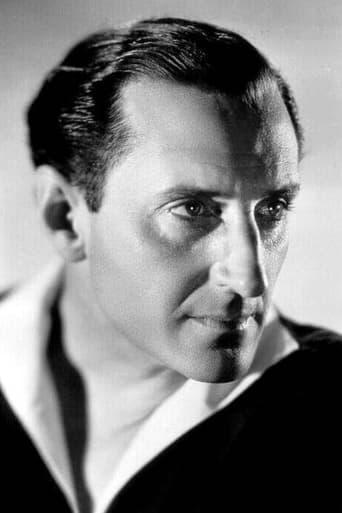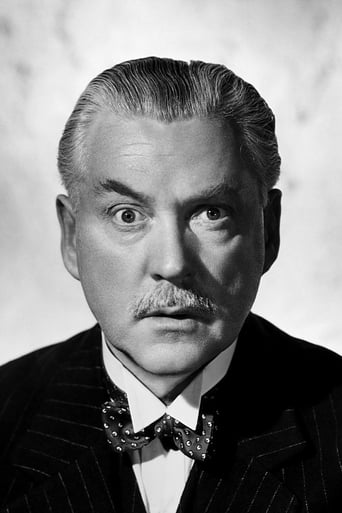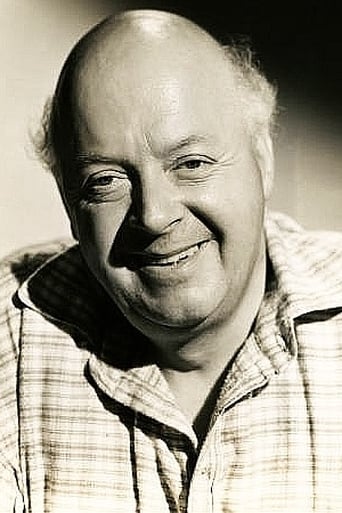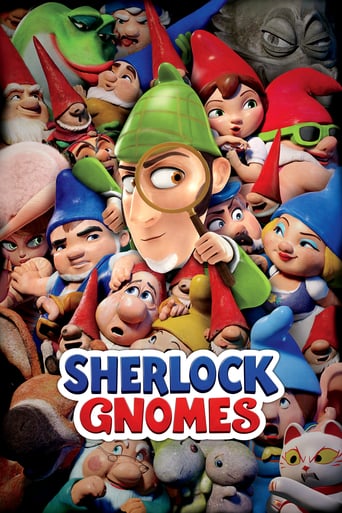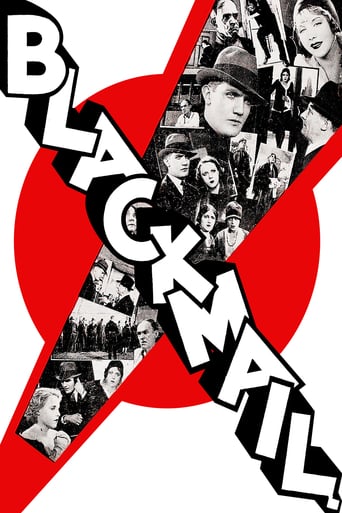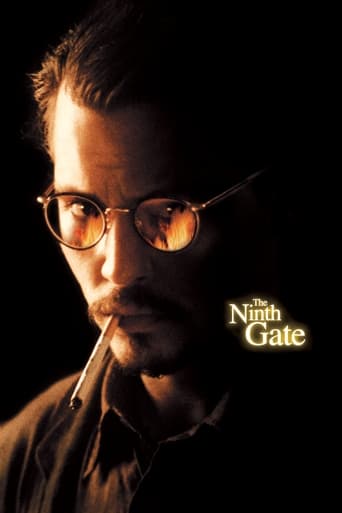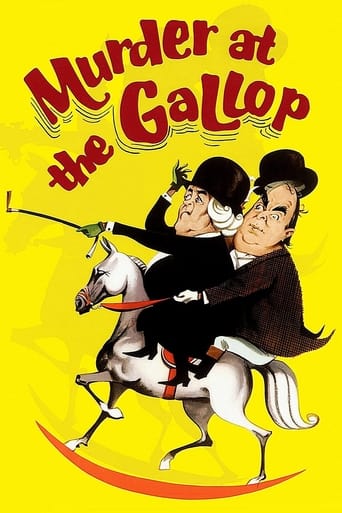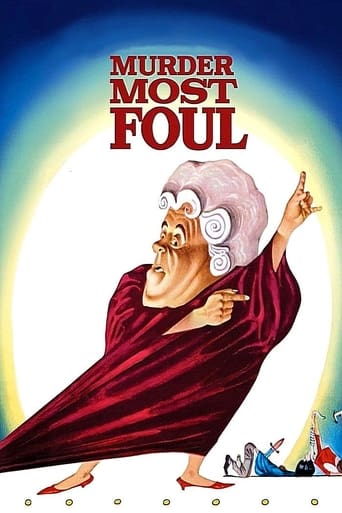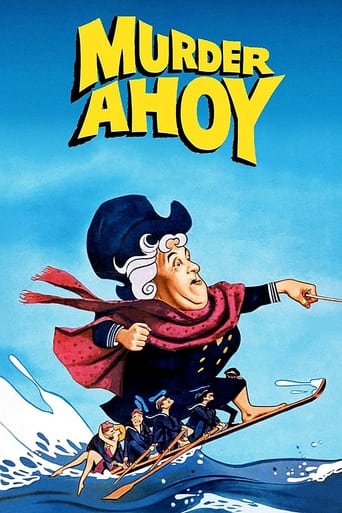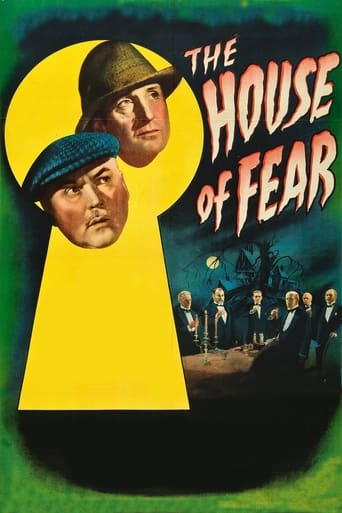

The House of Fear (1945)
The Good Comrades are a collection of varied gentlemen who crave one thing - solitude. They reside at Drearcliff House, ancestral home of their eldest member. All seems serene and convivial until one by one the members begin to perish in the most grisly of manners. Foul play is suspected by the Good Comrades' insurance agent, who turns to Sherlock Holmes and Dr. John Watson for guidance.
Watch Trailer
Cast


Similar titles
Reviews
I'll start by saying this is one of my favourite in the series of the movies starring Rathbone as the legendary detective. To say it's only very loosely based on Conan Doyle's 'The Five Orange Pips.' is a bit of an understatement, there are very few parallels with the original text, but that doesn't matter. The screenplay is great, very entertaining and full of suspense. Dare I say this has more of a feel of an Agatha Christie, then a Conan Doyle, Holmes is here very much as a Detective then a spy in disguise.Some great moments, my favourite I think being Watson being spooked and shooting at a suit of armour and a cat, very funny. Naturally Lestrade is called in (Even up to Scotland,) and as always he and Watson have some funny scenes.Rathbone is on fine form, it seems apparent that he enjoyed making this one, he is very much at ease.A great mystery, full of suspense that will have you guessing til the end. 9/10
The "Sherlock Holmes" movie series resumes with its tenth installment of THE HOUSE OF FEAR (Universal, 1945), produced and directed by Roy William Neil. Being the only film in this franchise to lift a title from unrelated Holmes movie (Universal's own mystery, "The House of Fear," starring William Gargan), this entry, based on Sir Arthur Conan Doyle's "The Adventures of the Five Orange Pips," attempts on being different and most stylish from the previous entries, especially when formula tends to mix with that of both Doyle and famed mystery writer, Agatha Christie.Following the traditional opening titles and theme score introducing "Basil Rathbone as Sherlock Holmes" an "Nigel Bruce as Doctor Watson" through the lifting fog as the camera captures their footed shadow images walking slowly down the streets of uncertainty, the voice-over narrative reveals what's about to occur: "The events I'm about to relate began a fortnight ago in a grim old house first high on a cliff on the west coast of Scotland. This singular structure is known as Drearcliff House. Gathered there for dinner were the seven members of the most extraordinary club called the Good Comrades ..." The story opens with the gathering of wealthy middle-aged members headed by its jolly old founder, Bruce Alastair (Aubrey Mather), Ralph King (Richard Alexander); Stanley Rayburn (Cyril Develati); Captain John Simpson (Harry Cording); Guy Davies (Wilson Benge); Doctor Simon Merrivale (Paul Cavanaugh); and Alan Cosgrove (Holmes Herbert). Mrs. Monteigh (Sally Shepherd), the melancholy housekeeper who never smiles, passes out an envelope containing orange pips to Ralph King, a retired barrister. The following night, King is killed as his car plunges over a cliff. As the men drink a toast to their dearly departed member, Mrs. Monteigh passes out another envelope, this time to Stanley Rayburn, a distinguished actor in his day. He, too, meets his doom. Because the club members have made each other beneficiaries to their substantial life insurance policies, Mr. Chalmers (Gavin Muir), an insurance underwriter, comes to famed London detective Sherlock Holmes for assistance. When Holmes learns Doctor Merrivale, a famous surgeon acquitted years ago for murder to be one of the members, he immediately takes the case. Assisted by his colleague, Doctor Watson, the two crime solvers come to Scotland via train, The Flying Scotsman. Upon their arrival, more ghastly murders take place, all preceded by a mysteriously slid under- the-door envelope containing orange pips, indicating a symbol of death. Inspector Lestrade (Dennis Hoey) and assistant Sergeant Bleeker (Leslie Dennison) of Scotland Yard soon enter the scene, not long after Doctor Watson's life is threatened and soon abducted when coming close to solving the mystery himself during his frightful stay in the house, or better yet, castle of fear.With an abundance of movie mysteries produced at that time, whether individually or part of a continuing series, the best are the ones that succeed even with overly familiar plots. THE HOUSE OF FEAR happens to be one of them. Witnessing club members being killed off one by one as survivors come fear of their lives, suspecting one another, adding to the suspense. Another added treat is the imaginative mid-camera range of subject matters to appear taller than their actual size as well as capturing certain viewpoints through slant camera focus. Aside from well constructed mystery and fine use of witty exchanges between Watson and Lestrade, the plot formulates well-intentioned humor for one noted scene that would do the comedy team of Abbott and Costello proud set during the midnight hours in a cemetery where Watson is shown doing all the work digging up a grave while Holmes sits around to think. As Holmes temporarily steps out of the picture, Watson finds himself conversing and answering questions to the constant sound of "Who?" turning out to be from an observing owl resting on a tree branch above. Notable quote: "No man goes whole to his grave."For some trivia: THE HOUSE OF FEAR turns out to be a rare instance in the series to not include Mary Gordon in her recurring role as Mrs. Hudson. It's also the second time the full name of Holmes' assistant is indicated, that of Doctor John H. Watson. Harry Cording, usually seen in villainous briefs in other Holmes segments, has a sizable role for a change, while Doris Lloyd (Bessie); David Clyde (MacGregor, the blacksmith); and Alec Craig (Angus) turn up in scene or two. Excluding one brief moment of a plunging car, THE HOUSE OF FEAR could easily pass for Doyle's original intent with story setting being the 1890s rather than the 1940s.THE HOUSE OF FEAR, distributed to home video and later DVD format, having been broadcast on numerous public television and cable channels, including Turner Classic Movies (TCM premiere: December 26, 2009), may not show preference as the best in the entire series, but certainly as enjoyable from start to finish as Holmes mysteries go. Next installment: THE WOMAN IN GREEN (1945) which features Holmes' arch enemy, Professor Moriarty. (***)
An insurance company investigator asks Holmes and Watson to look into the situation in a remote Scottish mansion. It seems that the half a dozen or so retired professionals who live there have taken out insurance and made the other members their beneficiaries. Recently, one member received an envelope containing the same number of orange pips or pits as the number of members, only minus one. The recipient dies a mysterious death forthwith. Then another member receives a similar enveloped and is found mangled. Time for Holmes and Watson to look into the affair. It's very loosely based on Conan-Doyle's "The Five Orange Pips."The remaining five members are a diverse lot, some sinister in aspect and behavior, some innocent, and one babyish and accommodating. Yet, as the members continue being knocked off in accordance with the motto of the mansion, that no man shall go to his grave whole, it appears that one of them is knocking off the others in order to get the insurance at the end.The plot turns out to be improbably complex. The sepulchral housekeeper is a red herring. And there is one big loose end in the narrative. If everyone is murdered except for one man, isn't he the beneficiary and de facto the killer? Or suppose ALL of them are killed. Then who gets the insurance? As Holmes, Basil Rathbone is his usual crisp and authoritative self. Watson and Dennis Hoey as Inspector Lestrade seem to be engaged in a duel of wits to see who is the most foolish. Some of their shenanigans are plain silly, with Watson alone in the dark, believing he's surrounded by ghouls, and shooting at phantoms. The other cast members turn in professional performances, and the old dark castle and stormy setting evoke the proper atmosphere. The nearby village doesn't exactly look Scottish. It looks more like turn-of-the-century Mitteleuropa, probably because the sets were left over from "The Son of Frankenstein." I realize that old stone mansion is supposed to be spooky but it actually looks kind of inviting. Okay, it's chill and drafty but what could be better than to sit next to an eager fire while wrapped in a thick wool tartan and being served haggis and brandy by that specter of a housekeeper? Well, I guess she would be something of a problem but could easily be replaced by a dozen young Swedish maids. If you can own the castle, you can afford a larger staff.
The 10th of 12 movies that Basil Rathbone and Nigel Bruce shared the screen as Sherlock Holmes and Dr. Watson.A prime suspect and lots of bizarre deaths indicating something that only Holmes can figure out.Watson is his usual bumbling self providing much hilarity as he stumbles about and chats with owls.The feature was also directed by Roy William Neill, who did several Holmes movies. It was an excellent story told brilliantly at Neill's hands.Mystery, comedy, and cleverness all were hallmarks of these films and make them timeless.


